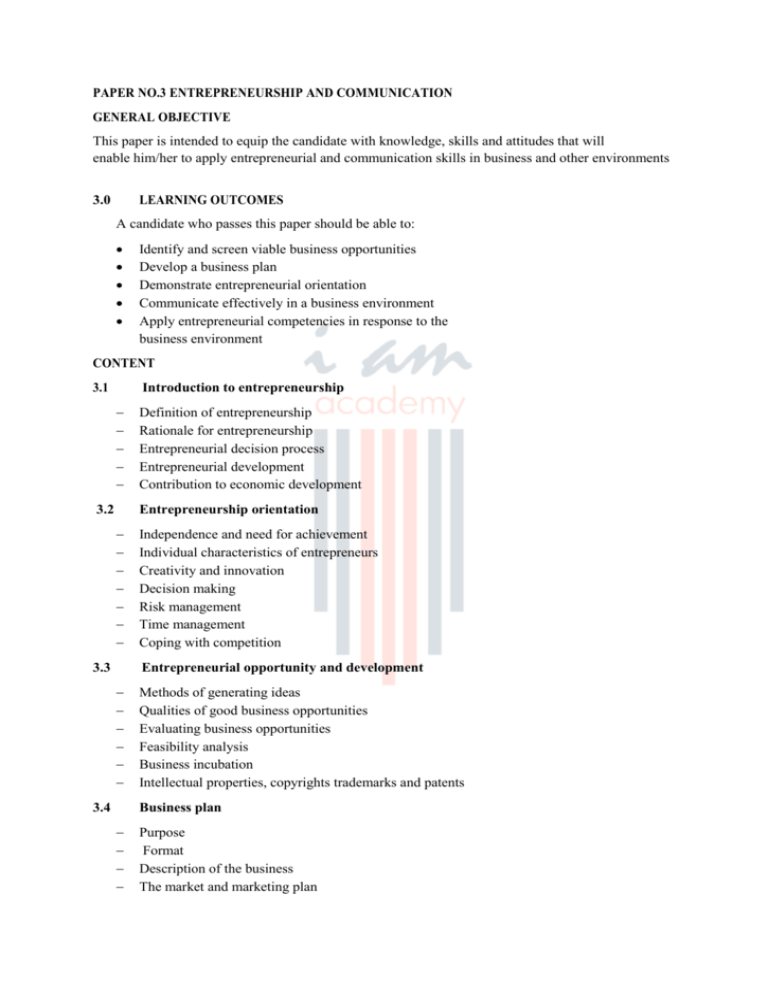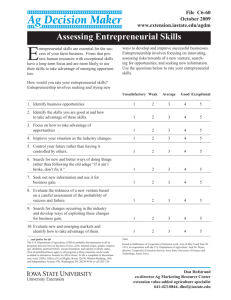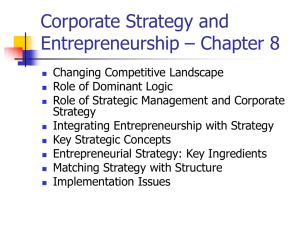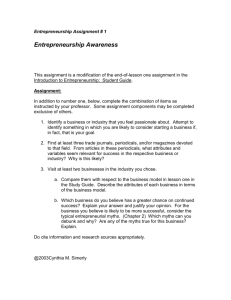Paper 3 Entrepreneurship and Communication
advertisement

PAPER NO.3 ENTREPRENEURSHIP AND COMMUNICATION GENERAL OBJECTIVE This paper is intended to equip the candidate with knowledge, skills and attitudes that will enable him/her to apply entrepreneurial and communication skills in business and other environments 3.0 LEARNING OUTCOMES A candidate who passes this paper should be able to: Identify and screen viable business opportunities Develop a business plan Demonstrate entrepreneurial orientation Communicate effectively in a business environment Apply entrepreneurial competencies in response to the business environment CONTENT 3.1 Introduction to entrepreneurship 3.2 Definition of entrepreneurship Rationale for entrepreneurship Entrepreneurial decision process Entrepreneurial development Contribution to economic development Entrepreneurship orientation 3.3 Independence and need for achievement Individual characteristics of entrepreneurs Creativity and innovation Decision making Risk management Time management Coping with competition Entrepreneurial opportunity and development 3.4 Methods of generating ideas Qualities of good business opportunities Evaluating business opportunities Feasibility analysis Business incubation Intellectual properties, copyrights trademarks and patents Business plan Purpose Format Description of the business The market and marketing plan 3.5 Operations and production plan The human resources plan The financial plan Launching the new venture Strategies for enterprise growth 3.6 Penetration strategy Market development strategy Product development strategy Franchising Joint ventures Mergers and acquisitions Going public Entrepreneurship and technology 3.7 Internet and e-commerce The enterprise website Globalisation Business outsourcing Techpreneurs Electronic and mobile money transfer Business networking Crowd funding and crowd sourcing Nature of business communication 3.8 Meaning of communication Purposes of business communication Internal and external communication The communication process Methods of communication Communication systems and networks Principles of effective communication Barriers to effective communication Written communication Rules of effective writing Business correspondence Reports Memorandum Proposal writing Forms and questionnaire design Circulars and newsletters Notices and advertisements Publicity materials Press releases Graphic communication 3.9 Oral and non-verbal communication 3.10 3.11 3.12 3.13 Oral communication in business Effective listening Interviews Non-verbal communication Interpersonal relationships Presentations skills Meetings Notice Agenda Role of the chairperson Role of the secretary Conduct of meetings Minutes Information technology and communication The internet Teleconferencing Wireless technologies Electronic postal services Ethics and integrity in business communication Concept of ethics and integrity Significance of ethical communication Factors influencing ethical communication Ethical dilemmas in communication Guidelines to handle communication ethics dilemmas Business ethics in communication Emerging issues and trends











